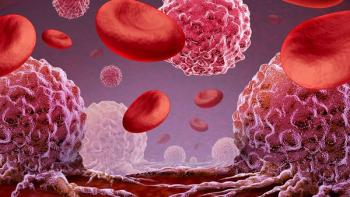
Education-Only, Exercise Intervention-Based Programs Helped Reduce Lymphedema Incidence and Increase Range of Motion in Affected Limbs of Patients Treated for Breast Cancer
More than half of the patients with breast cancer who took part in an education-only or exercise-based intervention program remained lymphedema free 18 months following surgery to remove one or more of their lymph nodes.
An education-only and education plus sleeve compression/exercise intervention program were similarly effective in reducing lymphedema incidence in women with breast cancer 18 months following the surgical removal of one or more of their lymph nodes, according to data recently published in Cancer.
Of note, the study results also indicated that women in the education plus sleeve compression/exercise intervention (lymphedema education and prevention [LEAP]) group experienced a quicker improvement in range of motion in the affected arm one year from baseline, compared to women in the education-only group.
Usually diagnosed within three years of treatment, lymphedema can occur in women with breast cancer who have underwent surgery to remove one or more lymph nodes. The condition usually consists of swelling and/or pain in the arm and/or leg.
“Although intervention studies have been conducted to reduce swelling in patients with lymphedema, lymphedema risk reduction strategies have not been rigorously tested,” the study authors wrote. “The overall goal of this clinical trial was to compare the effectiveness of two interventions on lymphedema incidence in a randomized cooperative group setting.”
The phase 3 trial consisted of a two-step procedure, the first of which enrolled 876 women who were 18 years or older and recently diagnosed with breast cancer. Patients were then able to register for the second step of the study within six weeks post-surgery, but only if they underwent either an axillary lymph node dissection or sentinel lymph node dissection. Patients were recruited from December 2006 to September 2013, with follow up until December 2015.
Among 554 eligible participants242 received only education to reduce the incidence of lymphedema and improve range of motion(203 patients in this group finished the study). The remaining patients were enrolled into the LEAP group; 244 of which completed the trial. Some patients discontinued treatment due to refusal, loss of follow up, and/or disease progression.
Components of the education only group consisted of an assessment of range of motion, patient-reported assessment of lymphedema knowledge and pain/swelling, guidelines for care/prevention, adherence tips, phone calls at nine and 15 months, and a $10 gift certificate at each data collection point. The LEAP group consisted of all of those components in addition to a
session with lymphedema specialist at the first visit, exercise regimen, hand weights, elastic sleeve, take home video, and reinforcing educational materials such as magnets, and bookmarks.
More than half of the patients in both the education only group (58%) and LEAP group (55%) remained lymphedema free 18 months following surgery.
Women in the LEAP group (75%) were less likely to report full range of motion in both arms prior to undergoing surgery than those in the education only group (58%). However, at 12 months following surgery, women in the LEAP group reported a 32% increase in full range of motion compared to a 6% increase in those in the education only group. Both groups equally reported the same full range of motion (93%) 18 months following surgery.
“In conclusion, a group-randomized trial to test the effectiveness of two interventions to reduce lymphedema risk in women with primary breast cancer who underwent any type of (lymph node dissection) failed to find a difference in lymphedema incidence, with approximately 20% of all participants developing lymphedema,” the authors wrote.
The authors noted there were several limitations to the study, including poor adherence to the program in the LEAP group and no available data regarding exercise among those in the education only group.
Although the authors did not find a significant difference between the two interventions, they noted they were able to glean important information from the results.
“This study established several important findings, including the positive impact of the intervention on a quicker return to full (range of motion) of the affected arm … and the need to assess adherence to intervention components,” they concluded. “Future research could test adherence-enhancing strategies and assisted activities among women at risk for developing breast cancer-related lymphedema.”
For more news on cancer updates, research and education, don’t forget to





